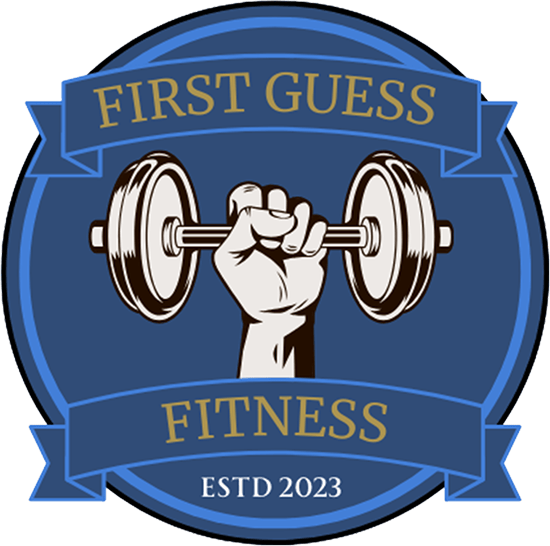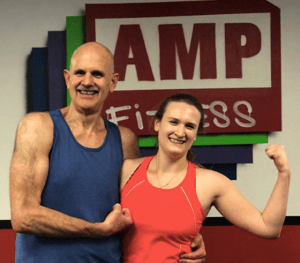As we age it’s more than likely that our training goals and our ‘WHY’ will change. Sometimes drastically.
Take me for example. When I was in my early 20s I picked up my first dumbbell. I was mildly athletic (ahh youth) and didn’t see training as a way to get better at sports… I just wanted to look like a dude that would be in Men’s Health magazine. I wanted to be cool and have more sex (obviously). So I worked out 5 days a week, sometimes upwards of 2hrs.
In my later 20s (after realizing fitness didn’t help me have more sex) I turned to strength and performance. I entered the coaching world and wanted to be respected so I had to become strong AF. Powerlifting mixed with functional training would keep me in the gym 4 days a week for 1.5hrs a pop.
Then I turned 30, got married and started a business (yes, all in the same year). I kept trying to revert to old training practices but found I wasn’t able to recover as quickly, had little injuries pop up here and there (like joint tendonitis, etc), and I just didn’t have the time.
Now I’m pushing 40 and after training myself for close to 20yrs and coaching hundreds of people… my priorities and mindset have shifted significantly.
I don’t feel like I need to look like I belong on the cover of Men’s Health nor do I feel like I have to be the strongest or the best to prove myself.
I’ve worked on those goals and feel good about that. Now I just want to be the best for myself and my family. So my training practices have changed…but just a bit. I lift weights 2-3 days a week, do a bit of ‘fun’ conditioning like riding a bike or going on a short jog, and spend as much time as possible playing with my son. And I feel great.
Whether you’ve been training for years or you’re just getting started on your fitness journey as you approach or have past the 40 mark there are a few things to consider.
Here are a few training considerations for the 40(ish)+ crowd.
1. Spend Less Time Wasting Time
At one point, when you were getting ready for bikini/Speedo season, you may have spent upwards 2 hours in the gym. Doing cardio, talking to friends, moving leisurely from one exercise to the next. But as life moves forward we start to realize how precious our time really is.
We’d rather be spending time getting that project done at work so we can have the weekend to spend more time with the kiddos and doing things we enjoy. So the thought of spending 60-90 minutes in the gym becomes cringe-worthy and most of the time we’ll avoid working out all together. Sound familiar?
But what if I told you that you don’t have to (and shouldn’t) work out that long anyways? That’s right! You can still get the best possible results by shorter duration workouts that last anywhere from 30-45 minutes or sometimes less. That should make it easier to remain consistent and train more frequently (2-3x per week).
Personally, I’m a trainer, and I’m down to 2-3 dedicated strength training sessions per week that last roughly 45-50 minutes. That’s opposed to my 20’s and early 30’s where 4-5 sessions for 90 minutes was the norm. I’m also spending 1 or 2 sessions on an air bike doing 10-15 minutes of intervals. Get in-get out.
Our recommendation: Frequency trumps duration but make sure you keep your sessions focused, targeted, and consistent. Strength is usually the way to go for 40+ but make sure to include mobility, core work and some quick and dirty conditioning.
Bonus Tip: If you must spend time, spend it having fun, with people you enjoy being around and also doing things that will move you towards your goals.
See How Training At AMP Can Help!
2. Focus on Strength
The average human has the potential to lose up to .5lbs of muscle mass each year starting at age 25. That’s upwards of 5lbs a decade so by the time you’re ready to retire you could lose 20lbs of lean mass. And considering the average person will gain weight by that age the results can be scary.
Your metabolism will slow down, your risk of injury goes up during simple every day tasks and even your ability to move your own body will decrease. All things that are preventable with even a little bit of strength training.
Now, you don’t have to be a powerlifter (although that’s one strategy) but working on improving strength is the name of the game past 40.
Being able to comfortably lift your body in a controlled manner is a good baseline for things such as push ups, lunges and squats and even better if you can do it with an added load. A good metric for something like a deadlift is ANYWHERE between 1x to 2x your bodyweight. You may have been able to lift or do more at one point but here’s some advice:
Just because you CAN doesn’t mean you SHOULD…or have to.
The best part? The research shows that 30 minutes 2-3 days per week of strength training is ideal for maintaining and/or gaining muscle strength and mass after 40. Remember what I mentioned above? ONLY 30 MINUTES!
Our recommendation: Focus on compound movements such as squats and deadlifts as well as single leg strength…these will yield more bang for your buck when it comes to maintaining muscle and fitness.
3. Incorporate Basic Power and Performance Work
Being able to maintain power, explosiveness and short, high intensity activity becomes increasingly important as we age. This is basically the ability to move your body quickly and sometimes reactively. Research shows we humans lose power almost twice as fast as we lose strength.
What does that mean?
We lose the ability to quickly bound up stairs, catch ourselves if we trip on the sidewalk or engage in ball sports like Quidditch or pickleball. We also start to get injured more and lose the ability to rebound quickly post-injury. Personally, I still want to be able to do cool shit with my kids (and then my grandkids) like play tag and kick a ball around and go on adventures.
Things like sprinting at 100%, jumping on a 40″ box, and training till you almost puke probably aren’t the best idea anymore (or ever, but that’s another post). Remember: just because you can, doesn’t mean you should or have to!
But there are ways to maintain power and performance as humans of a certain age. Unless you’re a professional athlete, sticking to the basics and maintaining the ability to move quickly is all you’ll need.
Our recommendation: Incorporate ‘safe’ power and explosive exercises like Russian kettlebell swings (and other kettlebell exercises), medicine ball slams and things like hopping, skipping, and jumping (just not on a high ass box).
4. Mobility and Core Control is EVERYTHING
I would be remiss not to mention the importance of mobility and core control as we age. The stuff we all know we should be doing but rarely do (unless a coach or trainer says to). The fact is, this shit is important.
At AMP, we bake it right into the warmup and sprinkle these exercises liberally throughout the program.
They’re not always the most fun, exciting or badass exercises but they’re totally necessary for keeping you moving like a ninja.
Since we understand that time is limited, we often opt for more bang-for-your-buck exercises that combine core control and various areas of mobility.
But what about core exercise?
Our favorite saying at AMP is, “Everything is a core exercise if you try hard enough.” That’s right, each functional exercise where you’re moving your body becomes a core exercise since you have to control your limbs and spine. Noodle on that for a moment.
Our recommendation: Sprinkle all sorts of mobility and core control exercises into your warm ups and between strength exercises. If you’re moving well, you’re less likely to get injured and will be able to continue nailing your training goals.
Wrapping It Up
More than likely most of this information wasn’t too shocking but it IS super important to understand that as we age certain things become more important and certain things become less important.
As our goals and priorities change, so should our training. We have families who depend on us and we can only best serve them best if we maintain a certain level of fitness. But that doesn’t mean we have to spend countless hours in the gym each week.
Maintaining strength, doing dedicated mobility work and working on core function are the name of the game. And a good training program can incorporate all 3 at the same time…and get done in less time than an episode of your favorite Netflix show. You know what you must do!
I know you got this,
Steve
PS – Not sure where to start? Let our coaches help design a training program and clear path for you to get started and stay started! CLICK HERE

